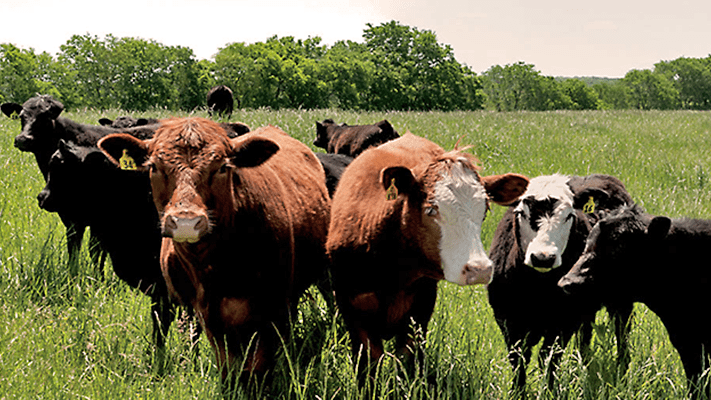Importing Live Cattle and Bison From Countries Other Than Canada and Mexico to the United States

USDA APHIS regulates the importation of all ruminants and their germplasm (embryos/oocytes, semen, cloning tissue) to prevent the spread of animal diseases. Ruminants include all animals that chew the cud, such as cattle, buffaloes, sheep, goats, deer, antelopes, camels, llamas, and giraffes.
Requirements
Australia
- Contact APHIS; live bovine and bovid imports are not possible at this time.
New Zealand
- A permit and export health certificate are required.
- Protocol is being updated.
A permit and export health certificate are required to import bovine embryos from the countries listed below.
Australia
- Health Certificate: Bovine Embryo Import From Australia
- Protocol is being updated.
European Union
- Model Health Certificate: Bovid Embryo Import From the European Union
- This health certificate also allows the import of water buffalo embryos from the European Union.
Due to the recent detections of foot-and-mouth disease (FMD) in Germany, Hungary, Slovakia, and Austria, import of bovine embryos from these countries is currently prohibited.
Because of ongoing lumpy skin disease outbreaks in Europe, bovine embryos from the following regions, collected on or after the specified dates, are not eligible for importation to the United States:
- Greece (August 4, 2015–present)
- Bulgaria (March 29, 2016–present)
- Croatia (August 8, 2016–present)
- Italy (April 22, 2025–present)
- France (April 30, 2025–present)
Netherlands
New Zealand
Norway
Spain
- Health Certificate: Bovine Embryo Import From Spain (142.96 KB) (May 2024)
- Veterinary Declaration of Bovine Embryo (183.78 KB) (May 2024)
Switzerland
United Kingdom
Bovine semen may only be imported from the countries listed on this page, with an import permit as designated.
Australia
- Health Certificate: Bovine Semen From Australia
- Protocol is being updated.
European Union
- Approved European Bovine Semen Sex Sorting Facilities
- Model Health Certificate: Bovid Semen Import From the European Union
- This certificate allows the import of water buffalo semen from the European Union.
Due to the recent detections of foot-and-mouth disease (FMD) in Germany, Hungary, Slovakia, and Austria, import of bovine semen from these countries is currently prohibited.
Because of ongoing lumpy skin disease outbreaks in Europe, bovine semen from the following regions, collected on or after the specified dates, are not eligible for importation to the United States:
- Greece (August 4, 2015–present)
- Bulgaria (March 29, 2016 –present)
- Croatia (August 8, 2016–present)
- Italy (April 22, 2025–present)
- France (April 30, 2025–present)
Czech Republic
Netherlands
New Zealand
Norway
- Approved European Bovine Semen Sex Sorting Facilities
- Health Certificate: Bovine Semen Import From Norway
Spain
- Health Certificate: Bovine Semen Import From Spain (225.38 KB) (May 2024)
- Veterinary Declaration of Bovine Semen (241.98 KB) (May 2024)
Switzerland
- Approved European Bovine Semen Sex Sorting Facilities
- Health Certificate: Bovine Semen Import From Switzerland (963.05 KB)
United Kingdom (Great Britain, Northern Ireland)
- A permit and export health certificate are required.
- Approved European Bovine Semen Sex Sorting Facilities
- Health Certificate: Bovine Semen Import From Great Britain
- Health Certificate: Bovine Semen Import From Northern Ireland
What You Need To Know
- U.S. transits are classified as shipments presented to a U.S. port of entry for conveyance purposes to then be transported to a destination country shortly after.
- Please note that any animals and their germplasm transiting the United States must not transit countries with questionable disease statuses prior to reaching a U.S. port of entry.
- All transits require a contingency plan. Submit your contingency plan with your permit application (VS 17-129 (211.74 KB)) to laipermits@usda.gov. To submit an import permit electronically, visit APHIS eFile.
- If you are applying to import live animals, semen, and embryos, you may submit applications by email to laipermits@usda.gov.
Contact Us
Live Animal Imports
For questions about import permits or permit applications:
Live Animal Import Permit Team
Email: laipermits@usda.gov
Phone: 301-851-3300
For general questions related to the import of a live animal:
Live Animal Import and Export
Email: laie@usda.gov
Phone: 301-851-3300

